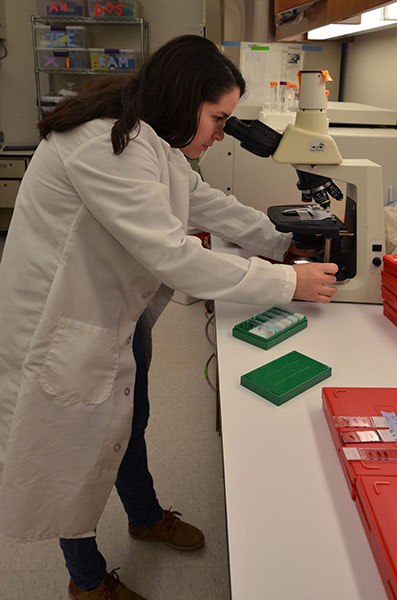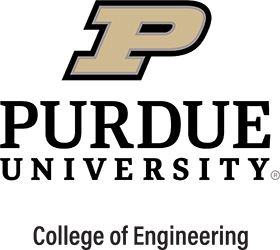When Clarissa Hernandez Stephens looks back at the path leading to her anticipated 2019 graduation with a PhD in biomedical engineering, perhaps the biggest constant she sees has been change. She enrolled as a graduate student at Purdue's Weldon School of Biomedical Engineering for its intensive mix of research and clinical studies after what she calls a very traditional bachelor's degree program in chemical engineering at the University of South Alabama. She experienced winter in a new way after having spent her entire youth in the southern United States. She married, and her husband got her interested in Olympic weight-lifting after her expertise in soccer had culminated in captaining her college team's climb to the NCAA playoffs.
But these lifestyle changes had, and still have, an element of consistency reflecting Clarissa's range of interests in medicine, from cellular behavior to patient care. Her excellence in lab techniques, project management, and analysis have yielded fellowships and grants for pioneering work on diabetes that she hopes will continue as a postdoctoral scholar to long-time mentor, Sherry Harbin, professor of biomedical engineering and basic medical sciences at Purdue. Collaborations engaging Harbin's laboratory with the Weldon School, Indiana University School of Medicine, and the Center for Diabetes and Metabolic Diseases at IU School of Medicine resonate with the spirit of teamwork Clarissa says she loved in athletics and sees all the time in her PhD pursuits.

"It's been great because Sherry brings in other experts to learn from," says Clarissa, noting the "mentality of hard work" and the synergy with IU School of Medicine's diabetes experts; they helped point the way toward prospects for major impacts on the lives of patients needing daily doses of insulin.
"Our goal is to give them a long-term treatment option using replacement cells for insulin-releasing and glucose-sensing so they don't have to give themselves daily injections," she says. The path toward this major benefit for humans with type 1 diabetes has led her through a spectrum of experiences, including animal tasks - such as injections and glucose sampling on mice, followed by steps toward testing the therapy on diabetic dogs. In coordination with a team of co-mentors, she is working to overcome various obstacles, such as a body's immune-system rejection of insulin-producing cells transplanted into the pancreas. Tissue engineering and the development of new materials to help the therapeutic "islets" endure for months inside a body represent the ways engineers can contribute, translating a concept into eventual clinical care in hospitals.
"I still have to do data analysis," but the progress already seen has allowed her to co-author papers for publication and participate in the search for additional funding. "It feels great," Clarissa says of the steps toward testing with diabetic animals. "That's why I want to continue to work on it," rather than cutting short her investment of time and talent when her official PhD candidate's lifestyle ends.
Nevertheless, she is giving thought to the next set of changes in her career. "I like the research part of the work, but I also like the clinical translation part," so she is considering a therapy-development career in private industry. Academic environments tend to focus less than biotech companies on the applications of engineering knowhow, Clarissa says, although there have been no such barriers in the Purdue College of Engineering-IU School of Medicine partnership and the collaborations of the Harbin lab.
"My brain is going a lot," she acknowledges. That's why she enjoys her hobby in weight-lifting, which gives her an occasional "escape" while feeding the competitive drive behind her athletic efforts. The relentless pursuit of goals and the desire to have an impact have been a perfect fit with science and sports alike, and she has been able to share that with dynamic colleagues in Indianapolis: "I like the action." The partnerships empowering this engineer may change the paths of action and satisfaction in many patients' lifestyles.


